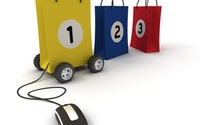 The fastest growing retailers may reap the early rewards
from the Internet of Things.
The fastest growing retailers may reap the early rewards
from the Internet of Things.
It’s pretty obvious that larger companies can devote more raw resource to innovation and exploration of future capabilities that may either drive down costs
or increase revenue.
And the retailers that are growing the fastest believe that every component of their business stands to gain from next generation IoT technologies, according to recent
research.
The study, by Retail Systems Research (RSR), comprised a survey of retailers, 47% with revenue of more than $1 billion.
The research found that winning retailers are keeping
a keen eye on many areas of IoT technologies, one of which is beacons, as I wrote about here yesterday (70% of Fastest Growing Retailers See Beacons As High Value).
advertisement
advertisement
But it goes
beyond that. The majority of retailers see the Internet of Things as a way to differentiate themselves from their competitors.
This can be somewhat of a challenge to retailers who are
experiencing either average or below average growth. And that’s the dilemma. The slower growth retailers don’t necessarily have the resources for IoT investment and they likely are more
focused on making today’s numbers rather than chasing tomorrow’s.
The challenges for winning retailers and those living with slower growth also are different.
The top
IoT business challenge for the fastest growing retailers is the demand for more speed and agility in their operations (46%), while the top challenge for laggards is consumer price
sensitivity, which limits their ability to raise prices, also at 46%.
Slower growing and perhaps smaller retailers have another disadvantage. More than half (57%) see their top barrier to IoT
projects as having to deal with so much data from so many different sources in real time.
Fewer (42%) of the fastest growing, and likely larger retailers see that as a barrier.
In many
cases, larger and fast-growing retailers already had to establish systems for other things, such as customer tracking, loyalty programs and various systems to manage the flow of data.
Those
who haven’t even had to deal with that may find themselves more than a step behind in the Internet of Things.